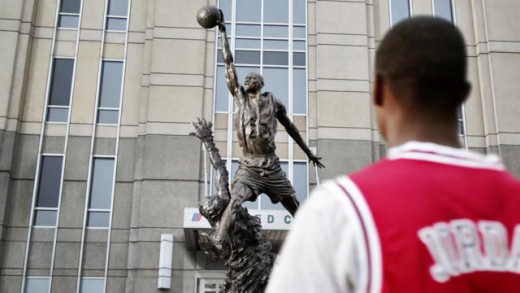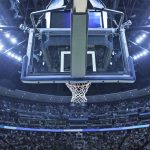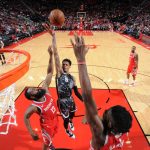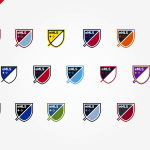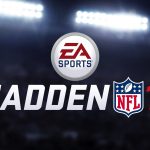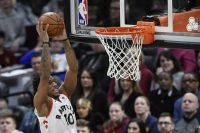Why Gatorade Wants To Go Beyond The Drink To Make Athletes Better
Senior Vice President and General Manager Brett O’Brien talks sports tech innovation, the brand’s strategy for the future, and more.
Back in September, I went down to the famed IMG Academy, a private high school that’s also a high-performance sports factory that brands like Prince and Under Armour partner with to test new gear. I was there to check out an outpost of Gatorade’s Sports Science Institute (GSSI), which has been using the academy’s wide variety of athletes—along with the Brazilian national soccer team, the Boston Celtics, Kansas City Chiefs, FC Barcelona, and the University of Florida—to test its latest innovation. It’s a smart cap water bottle that, along with a software platform, sweat analysis patch, weight scale, and specialized Gatorade formulas, can measure and manage an athlete’s hydration rates in real time to help them get the right kind of recovery at the right time.
Aside from a cheeky glimpse of it in a commercial late last year, that story is the first time the brand has talked about the smart cap bottle. At first, it sounds like an elaborate marketing stunt. A personalized water bottle, with LED lights, bells and whistles? Is it actually innovation or just another shiny object for us to buy? After talking to both athletes and trainers, this is the real deal and, frankly, a natural extension for the brand. Getting into personalization is a matter of survival among elite sports brands. Everything these days in sports is measured and personalized, from the everyday runner using Nike Plus to track their progress, to even casual baseball fans talking Sabermetrics. We’re all special and unique snowflakes who want our sports equipment, diet, training, and everything else to reflect that.
This is Gatorade’s 50th anniversary, and in that time the market for specialty drinks has gone from non-existent to overcrowded with options. Gatorade has become, to many, just another brand in the fridge at the store, alongside the sodas and energy drinks. But talking to senior Vice President and General Manager Brett O’Brien, the brand sees an opportunity to become a larger sports brand, among the likes of Nike and Under Armour, and its brand innovation strategy is the road map to that goal.
When I sat down to talk to O’Brien, it was in the bowels of the University of Florida’s Ben Hill Griffin Stadium, on the same campus Dr. Robert Cade originally invented the drink that would become Gatorade. We talked about sports tech innovation, the brand’s strategy for the future, and more, and while some of it is in the Fast Company piece, there was plenty more that I think gives a good Behind the Brand glimpse of how Gatorade plans to stay relevant in the next 50 years.
More Of The Same, But Different
The legend of Gatorade’s invention goes a little something like this: It’s damn hot and humid in Forida and the school’s football team was feeling the effect. And assistant coach asked Dr. Cade to help out. The first iterations were so dodgy and awful tasting, they tested it out first on the freshman team. O’Brien says that original challenge of simple solving a sports problem remains their goal today.
“We still have these athletic challenges or problems to solve, we still have athletes wanting to become more effective and better at what they do, and they want to know as much about their bodies as possible,” says O’Brien. “It started with Nike Plus and Fitbits, and the idea of using technology to know how you’re using your body, and just wanting as much data as possible to the point where you’re watching ESPN and they’re doing scientific breakdowns of wide receivers, how fast they run, their wingspan—we never thought about that before.”
And if athletes want to know increasingly more about what they need to be putting in to their body to maximize performance, Gatorade wants to be the brand they turn to. “It needs to be us,” says O’Brien. “We started it, we’re the most trusted brand when it comes to sports performance and nutrition, let’s get out there and learn with the athletes, continue to do things like GSSI and using IMG as an incubator to find out what athletes need, what they’re asking us to develop, and then let’s go develop some amazing stuff to help them get better than they already are.”
When asked if something like the smart cap bottle could be seen as a gimmick, O’Brien says the problem with gimmicks is that they’re short-lived. If you really want to make an impact, the product needs to back it up, and that takes time. “It’s not simple or easy, you can’t just expect to put a product out there and expect it to reach the masses immediately,” says O’Brien. “But if the product’s right and it’s actually helping athletes become better athletes, that will grow. So let’s get it right, let’s make sure it’s done well, and not rush it just because people will embrace it.”

Hydration Hardware
It’s always a risk for brands to branch out too far from their areas of expertise. Even the mighty Swoosh stepped back from its foray into hardware with Fuelband. Developing a piece of technology isn’t exactly the same thing as coming up with a flavor called Frost Glacier Cherry. GSSI wasn’t completely new to sports-related tech innovation, creating an in-car hydration system for NASCAR drivers back in 2003. But the new smart cap and overall hydration measurement and monitoring system were a whole other challenge. When deciding on how best to address the challenges of athletes and get in the personalization game, O’Brien says there were a number of ways the brand could’ve gone.
“We could get into the wearable space, we could say we’re going to go create a band of some kind that you wear that monitors sweat and thus leads to a hydration solution,” he says. “We could get into the app world and make a hydration app. But how is Gatorade being used right now and how do we make your hydration solution more effective? Instead of hoping you go buy something else that will then lead you to drink something out of that squeeze bottle, how do we make sure that squeeze bottle is the most effective tool for hydration as possible? And that squeeze bottle is telling you what you need, and how much you need it? It may be that it communicates with a wearable or an app, but we don’t have to create those, what we do need to make is the vessel with which you consume Gatorade. For us it was a pretty easy move to put our focus there because it’s an area we feel some ownership of—on the sidelines, just adding a new element to it.”
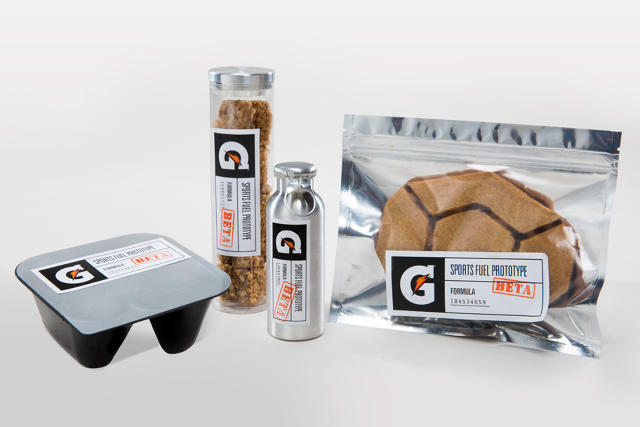
Sports Drink to Sports Brand
In that new Gatorade ad from late last year, sharp eyes would not only notice the smart cap bottle, but also a new logo. O’Brien says this is the first sign of the brand’s evolution from a beverage brand, to an overall sports brand.
“I you were to walk around the halls of Gatorade and ask who our biggest competitor is, you’d find a lot of those answers would be way outside the food and beverage space,” he says. “You’d hear Nike, Adidas, Under Armour, the companies who we think are very like-minded to Gatorade. On the end of all our ads for the last three years, there’s been a G-bolt logo. For the first time, this newest ad, while some people will notice the tease to the smart cap bottle, right after that they may notice it says, ‘Gatorade: The Sports Fuel Company.’ What I love about that is, it’s our declaration that we aren’t just the Gatorade you think we are. We are literally your sports fuel solution, and that’s where we’re headed.”
Okay, so “sports fuel” might make food and drinks a bit clinical, or something straight out of Drago’s nutrition manual, but it’s really a way for the brand to expand its reach beyond drinks, and into food and supplements. Over the next few years, the brand plans to introduce products for what O’Brien calls the 24-hour athlete.
One example is a nighttime yogurt snack. Working with GSSI, the brand is testing a product that uses casein protein, which is a slow-release protein, to provide better recovery while the athlete is sleeping. There are plenty of yogurts on the market, but Gatorade sees its opportunity in that none cater to or target high performance athletes by using as much casein protein. Another product in testing is a four-ounce “Oxygen Boost,” which is a natural nitrates product derived from beet juice that will help the flow of oxygen to your muscles, to feel less exertion with the same effort. There are other nitrates products out there, but there are trust issues with illegal supplements, as well as awful tasting beet options, that Gatorade hopes to use its brand reputation and experience with flavors to offer something athletes can both trust and like the taste.
“For me it’s less about, what are the stakes for us with this in the beverage world, and more about how are we introducing athletes to a whole new solution set, that it’s not just about when they’re hot and sweaty,” says O’Brien. “When it’s 2 p.m. and you’re hungry, what are you putting in your body that is then influencing how you’ll perform at practice at 6 p.m. and that’s hard, and it’s a big step for us to figure out how to continue to educate athletes on the importance of fuel, and then provide them with the best solutions possible. It’s less about reacting to the market, and more about reacting to the locker rooms.”
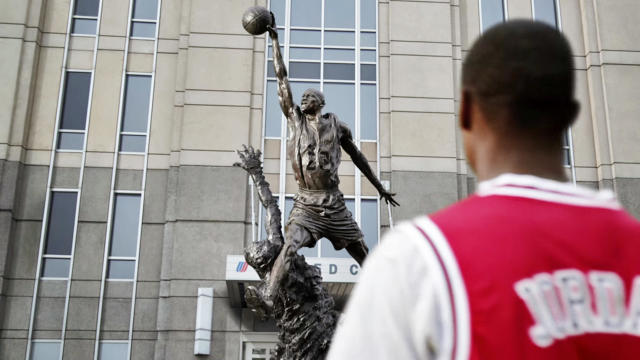
Timing The Play
The thing about stuff like casein protein and nitrates is that there is a relatively small market of people who actually know what the hell they are, let alone how it might help their athletic performance. O’Brien says the biggest challenge in the brand’s strategy is hitting the market with these new innovations and products at the right time. Something the brand hasn’t always been successful with.
A few years ago Gatorade launched Prime Chews, as a quick burst of carb energy. O’Brien says the product came out of a conversation with champion sprinter Usain Bolt. “He used to throw a bunch of candy in his mouth before he’d run and we thought there had to be a better solution that that,” says O’Brien. “So our R&D team came back with these Gatorade Chews, which are a really good product. The problem is, if you put these into the market and you say these are energy chews to eat before you work out, people are thinking, ‘I don’t need anything before I work out.’ It’s so foreign to them—it says energy but does that mean caffeine? So there’s a pretty high bar of education that needs to come with a product like this.”
It’s about timing a product with the understanding in the market. “Like protein,” says O’Brien. “You put a protein product out right now, people have a good understanding of what it is, what it does and why you need it. So if we’re planning to launch product to help fuel the athlete 24/7, how do you educate for that? As opposed to it sitting on the shelf, but you’re not grabbing it because you don’t even know that it might be something you could use. As athlete knowledge evolves, we’ll be right there to serve their needs. So I think the stakes are how we move as fast as athletes are, and staying ahead of that curve.”
Fast Company , Read Full Story
(130)

